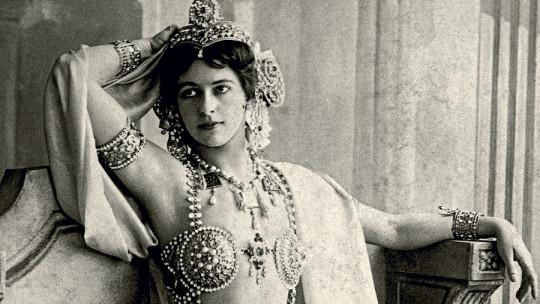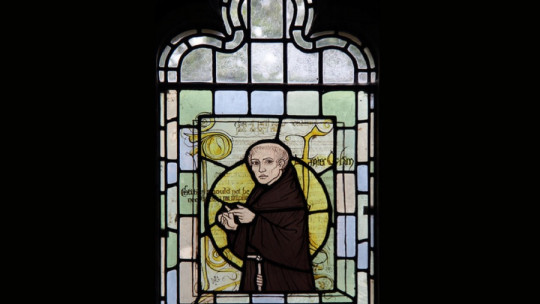Jeanne de Clisson or Jeanne de Belleville was the absolute mistress of the English Channel in the mid-14th century. For almost a decade she was sailing through her waters and plundering all the French ships that she found in her way. The nicknamed “Breton tigress” had only one objective: to exact revenge for the violent and unjust death that the French king, Philip VI, had given to her husband. Today we talk about Jeanne de Clisson, the medieval pirate who put the French in check during the Hundred Years War.
Brief biography of Jeanne de Clisson, the bloodthirsty medieval pirate
Even today, few people know this intrepid aristocratic woman who took to the sea to relentlessly pursue French ships crossing the channel. Her life seems like something out of a movie, but it is real; the story of Jeanne de Clisson or Jeanne de Belleville, a woman who, in the 14th century, and within the framework of the Hundred Years’ War, resisted the French crown with the support of the English king Henry III.
A noble girl like so many others
Jeanne de Belleville (for that was her birth name) was born around the year 1300 in Poitou, a region that currently borders French Brittany. Her father was Maurice IV de Montaigu, lord of Belleville, and her mother, Leticia de Parthenay, a woman of the local Aquitaine aristocracy. Thus, Jeanne’s childhood had to be spent in the domain of her father, and during these first years She received, in all probability, the education that all noble girls of the time received.
An education that, for the most part, was directed towards marriage, since let us remember that the main mission of a medieval woman (as in so many other times) was to perpetuate lineages through heirs. Jeanne’s luck was no different; At the age of twelve or fourteen (it is not known for sure, as her exact date of birth is unknown) she marries Geoffroy de Chateaubriant, with whom she has two children.
The status of wife is soon followed by that of widow, since Geoffroy dies in 1326, when Jeanne is about twenty-five years old. The young girl soon after remarries (this time, almost certainly, for love) to Olivier IV de Clisson, from whom she will take the surname by which she is known and with whom she will have five more children. .
Everyone covets Brittany
Jeanne’s life could have ended here. However, Everything changed for her in 1343, when, unpredictably, her husband was sentenced to death and executed. But what had Olivier de Clisson been accused of?
In the middle of the 14th century, the Hundred Years’ War, which pitted the French and English crowns and their respective allies, was already underway. Within the framework of this great conflict, a “minor” conflict broke out, the so-called War of the Breton Succession (1341-1364), which also involved, although indirectly, the French and English kings.
In 1341, when the legitimate Duke of Brittany, John III, died, two lineages engaged in a contest to occupy the vacant duchy. On the one hand, Jeanne de Penthièvre (1319-1384) together with her husband, Charles of Blois; and, on the other, John de Montfort (d. 1283), who in turn involved his wife, Joan of Flanders, which is why the war is also known as “the war of the two Joans.”
The conflict goes beyond the duchy of Brittany, since, in the meantime, Henry III of England has proclaimed himself king of France, and John de Montfort supports him. Quite the opposite is done by his rival, Charles of Blois, who leans towards his cousin, the legitimate King of France Philip VI. Meanwhile, the Breton nobles divide their preferences, and the specter of civil war becomes increasingly heavier and darker.
A head in Nantes
In the midst of this thorny conflict, Jeanne de Clisson’s husband, Olivier, is detained by the English and miraculously freed by his captors. The fact raises certain murmurs, which suggest that the nobleman has made a secret pact with the English against, of course, Charles of Blois and his cousin the king. But Philip VI of France is not willing to leave his enemies unpunished. Thus, he sets in motion a plan that will allow him to attract in one fell swoop all the gentlemen who, supposedly, support his rival, and whom he will unceremoniously eliminate. Among them is Jeanne’s husband.
In 1343, Olivier de Clisson is invited by the French monarch to a sumptuous tournament. Upon arrival, he is arrested along with other nobles suspected of treason and taken to Paris. There he is put on trial (in a pantomime trial and with a verdict already decided in advance) and is sentenced to die by beheading. His body, horribly mutilated, remains in Paris, hanging in Montfaucon for public ridicule, while his head is sent to Nantes, the capital of Brittany, and hung on a pike.
That is where Jeanne de Clisson, now a widow, contemplates her husband’s head, impaled and covered in dried blood. Next to her are her two sons, Guillaume and Olivier, at the time two still very young children. The woman had gone to Nantes in the hope of finding someone to intercede for her husband, but all in vain. The pantomime trial and subsequent execution were too quick. Not only has her beloved Olivier been murdered, but his good name has been covered with the plague of betrayal.
According to the chronicles, it was at that moment, before her husband’s inert head, that Jeanne swore revenge. Not only that; She forced her children, ages five and seven, to accompany her in her swearing-in. From then on, Jeanne would stop being Jeanne de Clisson or Jeanne de Belleville and would become “the Breton tigress”, who would carry out her revenge with sword and fire.
The revenge of “the Breton tigress”
At this point, the historical sources are somewhat confusing. It is known that Olivier’s death had also led to the confiscation of her assets, leaving Jeanne in poverty. Apparently, she sold the few belongings she had left (jewelry and some clothes) to finance an army of faithful Bretons to rise up with her against the French. For some time he was looting, burning and killing in various places in France, until, on an imprecise date, he set out to sea with a couple of ships. with the aim of harassing French ships in the canal.
How did that impoverished widow finance no less than two ships with their corresponding crew? Some scholars suggest that Henry III of England helped her in her undertaking. Be that as it may, the reality is that, for the space of ten years, “the Breton tigress” (in other sources, the “lioness of Brittany”) spread terror throughout the English Channel and sent countless people to the depths. of French ships, to the despair of his great enemy, Philip VI of France.
Myths and legends followed one another. Some said that the story of the woman who had become a pirate to avenge her husband was not true and was only a ruse to frighten French sailors. Others claimed that her ships were painted black, and her sails were painted the red of her victims’ blood. Also It was said that Jeanne herself was at the head of the boardings, and that she fought with weapons in hand like a true soldier.
Where Jeanne had learned to handle weapons and captain ships, we do not know. What there is evidence of is that, already in 1343 (just at the beginning of the looting of it), the crown of France declared it outlawed. However, they cannot reach it… for a decade.
The final battle
Around 1350 (again, there are no concrete data) the final and decisive battle takes place. Jeanne’s ships are eventually captured and sunk, and her men are massacred, but she manages to escape in a boat with her children. For five days and nights, the three suffer hunger, thirst and cold, completely adrift. Finally, they arrive on the English shores, where, of course, Jeanne and Olivier are cordially welcomed. Unfortunately, the other son, Guillaume, did not survive.
Beginning in the 1350s, The life of this extraordinary woman is “normalized” again. Safe in English lands and, later, back in Brittany at the court of the new duke, John V de Montfort, she contracts a third marriage with an English officer and retires to Hennebont. Sadly, the former pirate did not see her oath fully fulfilled. Jeanne died in 1359, but it was not until the following year that the memory of her husband was rehabilitated by the French king and all confiscated possessions were returned to her son Olivier (now Olivier V de Clisson).
The figure of Jeanne de Clisson, Jeanne de Belleville, “the Breton tigress” or “the bloody widow” begins to be discovered. However, and despite the fact that she is a unique character due to her extraordinary bravery and determination, we must not forget that she was the cause of many deaths, among them, of innocent people who had nothing to do with the death of her husband. Jeanne de Clisson’s courage and undoubted bravery should not cloud her true image: a cruel, bloodthirsty pirate who did not give up until her terrible oath of revenge was fulfilled.









